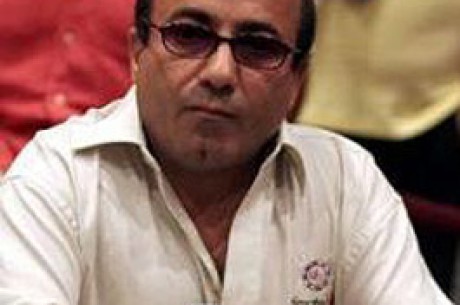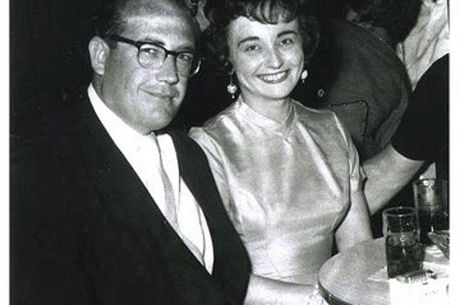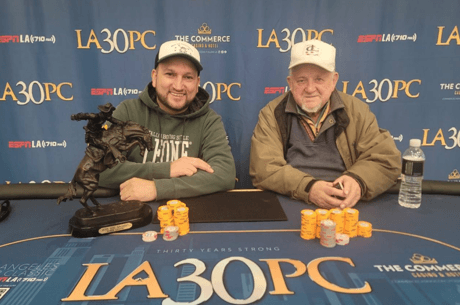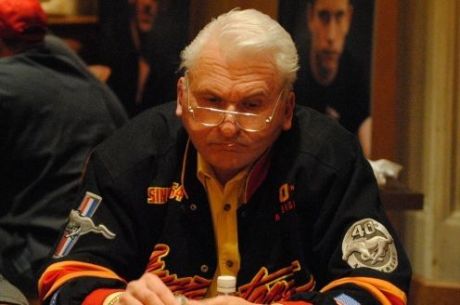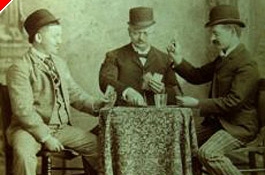A Quarter Century of Poker: Byron 'Panama' Liggett and Ed Miller
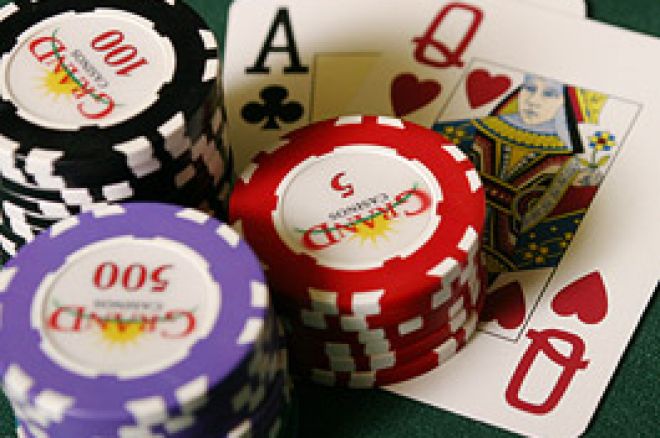
Over the years I've written a lot of columns for internet sites, newspapers and magazines, and most of my musings have centered on poker. I don't really know how many articles I've written, but let's just say the number is well into the hundreds.
By contrast, Byron Liggett has probably written ten times that many articles. The man is a virtual "writing machine," and that's just how he likes it. Over the past twenty years his insight into the world of gambling has been found in virtually every prominent gaming magazine and newspaper published. Currently, he writes for Poker Player Newspaper where he does his "North by Northwest" column as well as a feature each issue on "American Poker Players."
What his readers might not know is that Byron plays a little poker, too. In fact, he used to be a fixture in the 7-card stud games at Harrah's in Reno, where you could see him from the rail wearing his "Panama" hat. He was a steady player, a bit rocky, and usually came out ahead of the game, but he was more interested in covering the World Series of Poker for Gambling Times Magazine than he was in expanding his game across the flatlands of poker.
Now because he played a straightforward, tight game, when he showed a four-three on fourth street and raised, you could be damn sure he just hit two pair. If you reraised with a face card showing there was a good chance you could take the pot away from him. Byron was interested in winning without much variance. It made more sense for him to lay down a hand that might have a small edge, than to push back and risk most of his stack, especially if the hand was heads-up. He looked at his stack of chips like a tournament player does - it's often better to lose a little and wait for a better edge than to risk everything on a coin-flip.
Interest has changed from stud to hold'em since back when Panama and I used to play together, and there has been a lot written about the game. One of the best-received books about the game (in the past few years) is Small Stakes Hold'em, by Ed Miller.
Ed graduated from MIT in 2000 and spent a year teaching before moving to Redmond, Washington to work as a software developer for Microsoft. During his spare time he played a little poker online and started reading all he could about the game. By 2003 he was playing regularly in the $10/20 and $20/$40 games and doing well enough to quit his job and eventually moved to Las Vegas where he was introduced to David Sklansky and Mason Malmuth.
After some discussion, the idea for Ed to write a book (along with David and Mason) about low-limit hold'em was born and the result was Small Stakes Hold'em. Within the covers is a wealth of information about low-limit, loose games. Along with the usual topics of implied odds, pot equity, check raising, and position, the book stresses a very aggressive playing style.
Unlike a player who might pass-up a hand that jeopardizes their stack on a small edge, Miller insists that taking any small edge is a key to winning at poker. This philosophy obviously worked well for Ed, but some players have problems with their bankrolls after reading the book, and there are several reasons for this.
The first problem is that online (as well as brick and mortar) games are not as loose as they were just two years ago. The advice needs to be filtered and understood by the reader/player; it can't be applied in the same manner to every game. A second problem that many players have is adjusting to the variance inherently found when pushing their edge on coin-flips. A tight player who passes on many hands will experience a lower variance (in the short-run) with their bankroll than a person who takes every tiny edge and tries to exploit it.
However, the player who understands that getting any edge is preferable to passing on even a small edge, and has a bankroll larger than the oft-quoted safe amount of 300-times their game's big bet will, in the long run, make more money, and actually have a smaller variance.
The explanation for this is easiest if I use a few extreme examples. A player who only plays big starting hands like AA-TT and AK will usually have a chance of winning of over 50% on each hand. That edge increases against a single player, and is reduced each time another caller is added to the pot. This player will experience much less variance than a player who habitually plays suited connectors and is often calling bets trying to make a gut-shot straight on the river. The gut-shot will only be made on the river four times out of 46, so the odds of it hitting are about 11-1. Now, would you rather have a hand that wins half of the time, or a hand that wins only once in eleven?
If you answered that you want the first hand, you have not necessarily chosen well. You want the hand that wins the most money. If the first hand always winds up returning 12-10 on your investment, it is not as good as the later hand if the pot pays you 150-10 on your money for an 11-1 risk. However, because your chance of hitting are so much smaller than the AA hand, you will miss it a lot more, and your variance and will be much larger - but only in the short run. If you always get great odds for your hands, and you play them correctly and often enough, your win-rate will be much higher and your variance will be smaller.
By the same token, if you constantly risk a lot on an edge of 51-49, you will have periods in the short term where you lose a lot, but in the long run you will win a very large amount with reduced variance. Honest.
Ed Note: Flip 51/49 coins all day at Noble Poker


